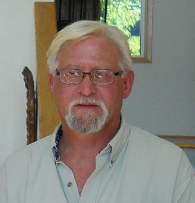Real estate investing goes through cycles. Real estate is not one big market. It’s made up of regional and local markets. Real estate isn’t like buying or selling milk and eggs. There is no stable supply and demand. In real estate, supply and demand are constantly in flux. Still, we all known the wise investor buys low and sells high. What is your crystal ball telling you today?
This is all food for thought. Or maybe a good discussion topic at your next investment club meeting. In the rear view mirror, you can clearly see that the time to buy was 6 or 7 years ago. Real estate was one of the best investments 7 years ago. The market was flooded with foreclosures, REO, short sales, and individuals desperate to sell. Buyers were very few and very far between. Unemployment was stretching for historical highs. Foreclosures and unpayable debt trashed people’s credit ratings by the millions. If you didn’t have cash, even a stellar credit rating probably won’t buy you a mortgage.
Fast forward those 7 years. People are fully emerging from foreclosures, bankruptcies, bad credit ratings, and are again fully employed. Home mortgages that were once underwater are now afloat. Home values have been strongly appreciating in value. Markets like San Francisco, New York City, and Los Angeles, are beyond the last bubble peak in terms of pricing. If not declining in price, these have become price stagnant. Bidding wars are dwindling in number as the result of few buyers being able to afford or willing to pay peak prices.
The major markets have shifted with Seattle leading the nation in price appreciation for multiple months. Outlying areas as far away as Tacoma are seeing steep increases in purchase prices. There may or may not be opportunities remaining in these secondary markets.
The questions to be asking yourself are for how long and how much higher will your current holdings continue rapid appreciation during this real estate cycle? It takes time to liquidate for top dollar. Before marketing any property, most investors have some maintenance, repairs, and sprucing up that needs attending to before marketing for top dollar. Have you given serious consideration to if it’s time to sell current holdings and what it will take to bring in that top profit?
Those that have multiple holdings should be fully aware which ones are generating the highest profit rate and which ones are at the bottom of the list. It may not be time to divest of all properties but it may be time to sell the lowest performers. Is it time to sell before your local market goes over the peak?
Grab your profit. And jump back into real estate investing. At any point in the real estate cycle, there are great investment opportunities. This could be the time to diverse your portfolio into commercial real estate. There is still plenty of upside in the right commercial sectors. Or it could be time to diverse into raw land or brownfields. Most indicators show strong and growing demand for new supply.
Specialized niche experts always have a network of people on the lookout for distressed properties for sale. Mold infested houses, fire damaged houses, and those with crumbling foundations, etc. never appeal to buyers looking for a turnkey home. If you’re a niche investor, maybe it’s time to sell an existing lower preforming property to start a new project. Start early because it takes time to market and sell one place while simultaneously searching out that next bargain deal.
No one can time the market perfectly, and anyone who says he or she can is lying or ignorant about how lucky they have been. But you should always strive to buy low and sell high.
Please leave a comment if this article was helpful or if you have a question.
 Author bio: Brian Kline has been investing in real estate for more than 35 years and writing about real estate investing for eleven years. He also draws upon 25 plus years of business experience including 12 years as a manager at Boeing Aircraft Company. Brian currently lives at Lake Cushman, Washington. A vacation destination, a few short miles from a national forest in the Olympic Mountains with the Pacific Ocean a couple of miles in the opposite direction.
Author bio: Brian Kline has been investing in real estate for more than 35 years and writing about real estate investing for eleven years. He also draws upon 25 plus years of business experience including 12 years as a manager at Boeing Aircraft Company. Brian currently lives at Lake Cushman, Washington. A vacation destination, a few short miles from a national forest in the Olympic Mountains with the Pacific Ocean a couple of miles in the opposite direction.